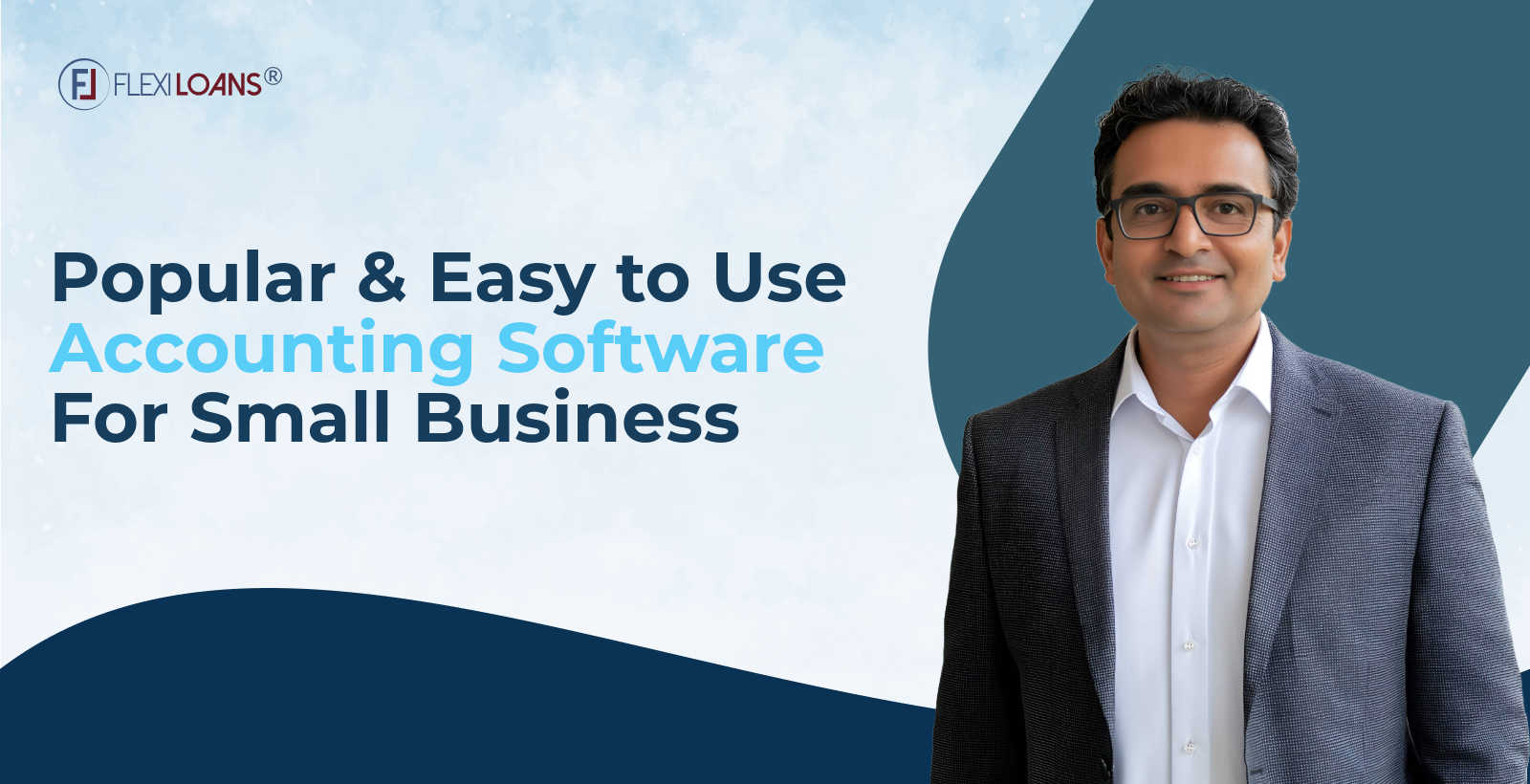May 28, 2025
Nov 30, 2025

Running a business comes with constant pressure to maintain a healthy cash flow. Payment from clients can take weeks or even months, which makes it hard to cover day-to-day expenses or invest in growth. That’s where invoice discounting comes in and offers flexible business financing that turns those pending invoices into liquidity.
More than 70% of MSMEs in India face working capital shortages. This is when they turn to informal sources of financing like friends, family, and local lenders. The business owners, however, also have a better business financing option available: invoice discounting.
Businesses that use invoice discounting see an improvement in cash flow management, which leads to increased operational efficiency. It provides quick access to the money you have already earned. Understand what invoice discounting is and how we can set it up.
What is Invoice Discounting?
The invoice discounting definition states that it is a type of short-term business financing where you use your outstanding invoices as collateral/security. You can use your client bills that they haven’t paid to get access to instant cash.
Instead of waiting 30, 60, or 90 days for payment, you present the invoice to a discounting provider, which in turn gives you up to 80-90% of the invoice value right away. You get the remaining balance after your customer makes the full payment with a small deduction fee.
Invoice Discounting Example
Let’s understand it with an example. Assume you own a little organic food store and you have sold items valued at ₹5,00,000. You have provided the buyer with an invoice for it but the payment will be processed after 60 days. However, you need money today to pay employees or purchase supplies. You are unable to wait 60 days.
You can then set up invoice discounting. A lender consents to pay you ₹4,50,000, or 90% of the invoice amount, in advance. Once you receive the payment from the buyer, you give that to a lender who lent you ₹5,00,000 once the business pays it after 60 days. The lender gives you the remaining amount after keeping a little charge (let’s say ₹10,000).
How Invoice Discounting Works
Invoice discounting is not the same as invoice factoring. In invoice factoring, the lender takes over the credit control and chases your customers for payment. But in invoice discounting, you have to get the money from your customers. It is a private affair and does not affect your customer relationships.
For businesses trying to keep their business running and to invest in new opportunities without waiting for payments to clear out, invoice discounting is really helpful.
Why Should Your Company Use Invoice Discounting?
From better cash flow to no collateral requirements, there are many benefits of invoice discounting that make it ideal for various purposes. Here are all the invoice discounting advantages you must know before applying for it:
- Faster Access to Funds: As opposed to waiting weeks for customers to pay, you can access cash within 24-48 hours with invoice discounting.
- Improved Working Capital: You can use these funds to pay employees, buy stock, or put them back into the business.
- No Collateral Required: What secures the loan are the invoices themselves, which is great for companies that do not have many assets to pledge as collateral.
- Maintain Customer Relationships: Discounting is a private affair, and your customers will not know you are using this as a business financing.
- Flexible and Scalable: The more you invoice, the more funds you can get out of it. It scales with your business.
If you are still wondering why use invoice discounting, the answer lies in its ability to provide instant cash flow without adding any debt.
How to Set Up Invoice Discounting for Your Company
During the fiscal year 2023–2024, the Reserve Bank of India’s Trade Receivables Discounting System (TReDS) funded 41.6 lakh invoices totalling ₹1.38 lakh crore. This shows that there is a demand for invoice discounting in India owing to its benefits. Here is how you can apply for invoice discounting:
Step 1: Evaluate Your Company Financing Needs
Before you jump into invoice discounting, you must evaluate your business needs and your company’s present financial state. Do you see yourself often in a cash flow crisis because of delayed payments? Are you passing on great project opportunities because of low working capital? Here’s how to assess invoice discounting for you:
- Go over your accounts receivable timeline. Are most of your clients on 30+ day payment terms?
- Look at your cash flow. Are you using up your reserve to pay for operations?
- Figure out the company’s financing needs. Do you need money quickly or in a shorter time frame to cover payroll or purchase inventory?
If you answered yes to any of the above, invoice discounting is a practical and efficient solution. It closes the cash flow gap and allows your business to keep growing without the heavy use of traditional loans.
Step 2: Choose an Invoice Discounting Provider
Once you have assessed your needs, it is time to choose a trusted invoice discounting provider. This choice will greatly affect your experience and the cost. Here’s how to choose an invoice discounting provider in India:
- Interest Rates and Fees: You must research the invoice discounting services with the best structure. Some charge a flat fee, and some have hidden charges.
- Reputation and Reviews: Go for the providers that have great reviews, transparent operations, and have worked with companies like yours.
- Speed of Funding: If you are in urgent need of cash, you must choose a provider like FlexiLoans with a fast turnaround time.
- Customer Support: Great support can smooth out the process, especially when you are just getting started.
- Type of Provider: Banks may have lower rates but also stricter terms. Alternative lenders are more flexible and faster in processing.
Step 3: Submit Your Invoices for Discounting
After choosing the right invoice discounting provider, you must submit invoices for discounting. Submitting these documents is a part of the invoice submission process. Follow these invoice discounting steps to submit documents:
- Upload Invoices: You must submit valid, unpaid invoices through the provider’s online portal or to a branch.
- Verification: The provider will check the invoice details, the customer’s creditworthiness and that there is no dispute.
- Supporting Documents: You will also be asked to submit proof of delivery, purchase orders, or signed contracts.
Once the provider accepts and approves your invoice, the provider will usually release 80–90% of the value within 24–48 hours. The rest is paid out once your customer pays the invoice, less the provider’s fee.
Step 4: Review the Terms and Conditions
Before you sign or finalise anything, take the time to review the invoice discounting terms and conditions of your invoice discounting agreement. It is important to review invoice discounting terms in order to spot any inaccuracies or discrepancies. Check for these key points before signing the invoice discounting agreements:
- Interest Rates & Fees: Know the exact cost of what you are to pay.
- Funding Limits: See if there is a maximum amount you can draw at once.
- Payment Terms: Know at what point you have to pay back after customer payment.
- Late Payment Clauses: Get familiar with the protocol if your customer pays late.
- Termination Conditions: How easy is it for you to get out of the agreement?
Step 5: Receive Funding
After the approval of a business loan, you will receive funds within 48 hours of time. This is when your business’s cash is back in your account. Here is the next step you must follow for getting invoice discounting loan:
- Funds are credited into your business account.
- Once you get the invoice discounting loan, you can use the funds as you see fit; pay salaries, restock inventory, and take on new projects.
- A balance of 10-20% is held back until the customer pays the full invoice amount.
This quick access to capital is what makes the invoice discounting funding process better than traditional loans. It turns your unpaid invoices into working capital almost immediately.
Step 6: Repay the Invoice Discounting Loan
The repayment process for invoice discounting is simple. Once your customer pays the invoice, the provider will deduct their fees and give you the rest. Here is how the repayment of invoice discounting works:
- The customer pays you or the provider (as per the agreement terms).
- The provider pays out the loan and deducts their fees and interest.
- You get the final amount.
If your customer/client is late with payment, some providers may charge extra interest. It is very important that your customers/clients are reliable and payment terms are clear to avoid issues. Keep track of all payments and have your accounts team work closely to pay back invoice discounting loans.
Common Mistakes to Avoid When Setting Up Invoice Discounting
Setting up invoice discounting is a great move for your business. But as with any financial tool, it has to be done right. Even common invoice discounting mistakes can lead to rejection. However, avoiding invoice discounting pitfalls is easy if you just pay attention. Here are the most common invoice discounting errors and how to avoid them:
1. Not Doing a Cash Flow Analysis
The most common mistake is not taking the time to understand your funding requirements. Over- or underestimating your needs will lead to extra costs in interest or cash shortfalls. Before you apply for a business loan, review your accounts receivable, monthly outgoings, and cash-in-flow timelines.
2. Going With the First Invoice Discounting Provider That You Find
Most businesses make the mistake of going with the very first invoice discounting company that they find. But not all providers are the same. Some may have better rates, more flexible terms, or faster service. Always do your research, check reviews, and determine what the fee structure looks like.
3. Ignoring the Terms and Conditions
It is important to review terms and conditions to ensure that they are favourable, transparent and without any hidden discrepancies. Hidden fees, long lock-in periods and complex payback rules can cause you issues in the future. Take the time to read the agreement in full. If anything is unclear, ask questions or get legal advice.
4. Poor Communication with Customers
Invoice discounting means you will have to tell your customers about the change in the payment process. If you don’t tell your customers clearly and beforehand, then you may face problems with payment and may see payment delays.
5. Relying Too Heavily on Discounting
Invoice discounting supports your cash flow, and overreliance on it can disturb it as well. Relying on it too much can put you in a debt cycle. This is why you must be careful when setting up invoice discounting.
Conclusion
Of the 6.4 crore MSMEs in the nation, only 20% have formal credit available to them. This is because the banks and lenders follow stringent eligibility criteria for business loan that MSMEs can’t meet. Invoice discounting, in these situations, proves extremely useful as the lender approves financing on the unpaid invoice. It also helps you improve cash flow, unlock working capital, and keep your business agile.
Setting up invoice discounting is a simple process, but it needs careful planning and execution. From evaluating your financing needs to choosing a trusted provider, each step plays a vital role in ensuring success. If your company struggles with delayed payments, invoice discounting could be the solution you’ve been looking for. Set up your invoice discounting account and access quick, reliable financing tailored to your needs!
FAQs about Invoice Discounting
Ans: Most providers offer 80–90% of the invoice value upfront. The rest is released once the customer pays. If your unpaid invoice is ₹10 lakh, you can get up to ₹9 lakh.
Ans: Yes, it’s a common and safe financing method that helps businesses meet their financial objective. However, ensure your provider is reputable, and your customers are reliable payers.
Ans: Depending on the agreement, you will be liable for repayment in this situation. Some providers offer non-recourse options, where they bear the risk.
Ans: No, invoice discounting is confidential and private. It is an agreement between a seller and a lender. Your customers won’t know you’re using this service.
Ans: Yes, as long as you issue invoices to creditworthy businesses, you can qualify for invoice discounting — even if you’re a small or new company.







